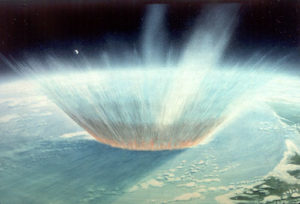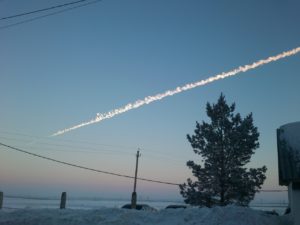NASA recently launched a spacecraft carried by Elon Musk’s SpaceX Falcon 9 rocket to see if it will be possible to prevent potentially hazardous asteroids from hitting the Earth.
The DART (Double Asteroid Redirection Test) spacecraft will hit a moonlet called Dimorphos, in order to change its direction, and reduce its speed by a fraction of one percent.
As the moonlet and the asteroid it orbits around – Didymos – are bound together through gravity, by shifting the course of the moonlet the experiment will also shift the course of the asteroid.
This binary asteroid system of Didymos and Dimorphos is perfect for testing to see if crashing a spacecraft into an asteroid is an effective way to change its course, should an Earth-threatening asteroid ever be discovered in the future.
No known asteroid larger than 140 meters in size has a significant chance to hit the Earth for the next 100 years. But only about 40 percent of those asteroids have been found as of October 2021.

Each year an estimated 25 million meteoroids and other space debris enter the Earth’s atmosphere, and almost never pose a danger to our civilization.
However, evidence suggests that that every 27 million years, for one reason or another, the Earth faces a major mass extinction event.
The last and most well-known of these was the Cretaceous-Paleogene mass extinction event that took place 65 million years ago, caused by a large asteroid that killed almost 78% of all life on our planet.
There are very few bodies that could be classified as comets or even as asteroids that can threaten life on our planet. But even average-sized meteoroids can cause significant damage to people and property.

Over 100 years ago in the Russian Krasnoyarsk region a massive 12 megaton explosion occurred after a meteor about 150-200 feet in size exploded three to six miles above the ground.
It is estimated that the force of the explosion was a thousand times more powerful than the atomic bomb dropped on Hiroshima.
This flattened over 80 million trees over an area of 830 miles. Today a similar explosion would be capable of destroying a large metropolitan area.

One of the most thoroughly analysed cases was the “superbolide” or exceptionally bright meteorite that hit Chelyabinsk on February 15th 2013. This caused estimated economic damage of 1 billion rubles or 10 million pounds. The Russian military were put on high alert. Troops and 20,000 rescue workers were deployed, and three aircraft surveyed the terrain from the air.
An emergency regime had to be introduced over three districts. Later on the same day 135 emergency recovery teams had to clear up the consequences of a meteorite fall.
A few days later the area was checked for chemical pollution, and psychological assistance was given to about 1,500 people.
So, given the experiences of the last few thousand years, should we be worried about an asteroid hitting the earth and causing a mass extinction?
Probably not – if we are to trust the scientists anyway. But such an event could still cause substantial damage and pain to thousands if not millions of people around the world.
Happily NASA, and Elon Musk with his Falcon 9 rocket, are ready to crash spacecrafts into rocks in order to make sure that they can save the day



